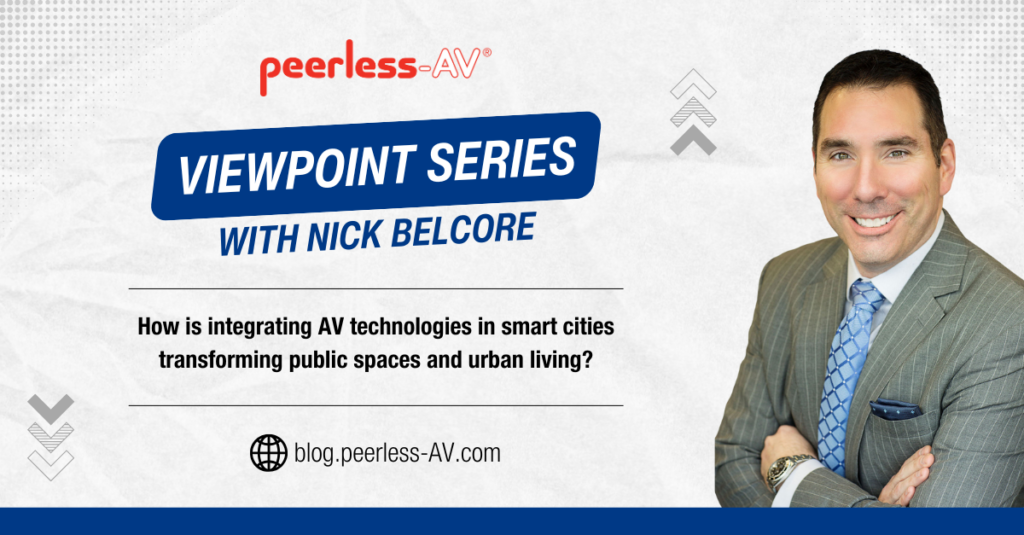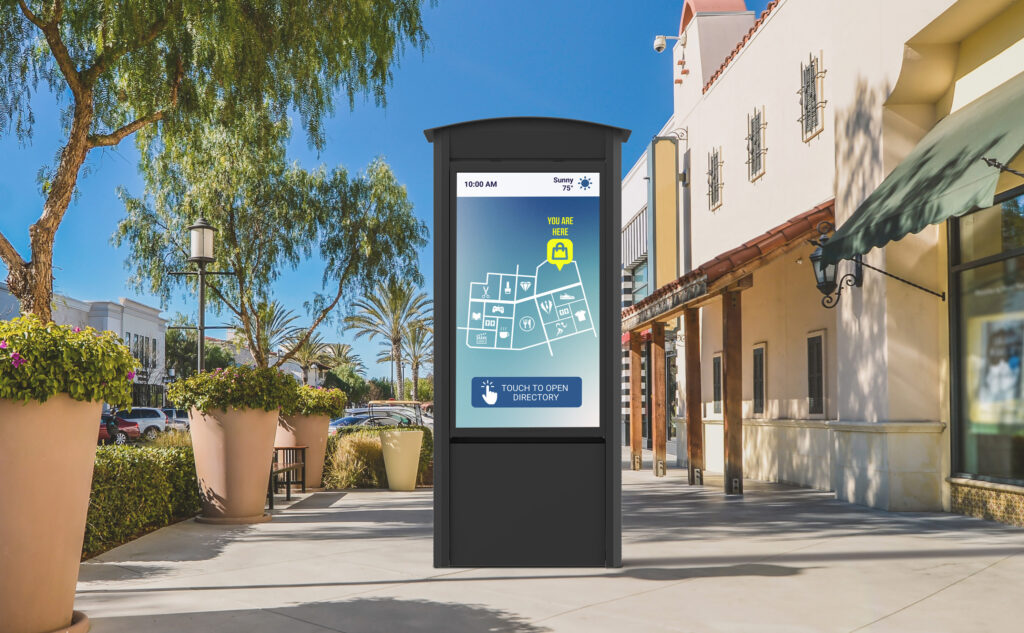
Welcome back to our “Viewpoint Series”, where each month, Nick Belcore, Executive VP at Peerless-AV, will delve into a pressing question in the Pro AV industry, offering insights on how businesses can evolve to meet the challenges of today’s rapidly changing environment.
For today’s topic, we’re examining an important question: How is integrating AV technologies in smart cities transforming public spaces and urban living?
The integration of AV technologies into smart cities is fundamentally reshaping the way urban spaces function and how people navigate public areas. AV technology innovations not only reduce environmental impact but also create more interactive, inclusive, and responsive urban environments.
One of the most significant benefits is the reduction of waste and resource consumption. For example, digital displays with low power usage, such as e-paper technology, are being used for messaging pedestrians and providing real-time updates. These displays eliminate the need for traditional printed materials like posters, signs, and paper flyers, which are not only wasteful but also require constant reprinting. In transportation hubs, e-paper displays have become particularly useful, offering the ability to run dynamic content with minimal power consumption, making them environmentally friendly while also providing up-to-date information.

The introduction of AV technologies in public spaces also brings a new level of interactivity that has not been possible in traditional urban settings. From digital kiosks offering city maps and directions to interactive screens displaying events and announcements, AV systems are making public spaces more engaging and accessible. This is especially crucial for individuals with various accessibility needs, including those with visual or hearing impairments. For example, AV systems can integrate text-to-speech features, visual signboards, or subtitles to ensure everyone can access the same information, regardless of their physical capabilities. This inclusivity helps cities become more equitable, ensuring that all citizens can navigate and interact with their environment on equal footing.
The use of AV technologies in public spaces is invaluable for public safety and emergency communication. During crises, such as natural disasters or security threats, digital screens and other AV systems can provide real-time updates, critical alerts, and evacuation instructions to help guide people to safety. The ability to disseminate urgent information rapidly and efficiently can make a significant difference in saving lives and preventing confusion in chaotic situations. By utilizing the full potential of AV technology, smart cities are not just enhancing the quality of life for their residents but also ensuring that public spaces are more responsive and adaptable to the needs of the community.
As cities continue to evolve, the seamless integration of AV technology will play a pivotal role in shaping how people live, work, and connect in the urban landscape.
Come back next month to see what AV industry topic we will cover in March!